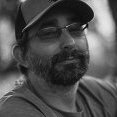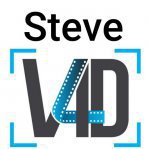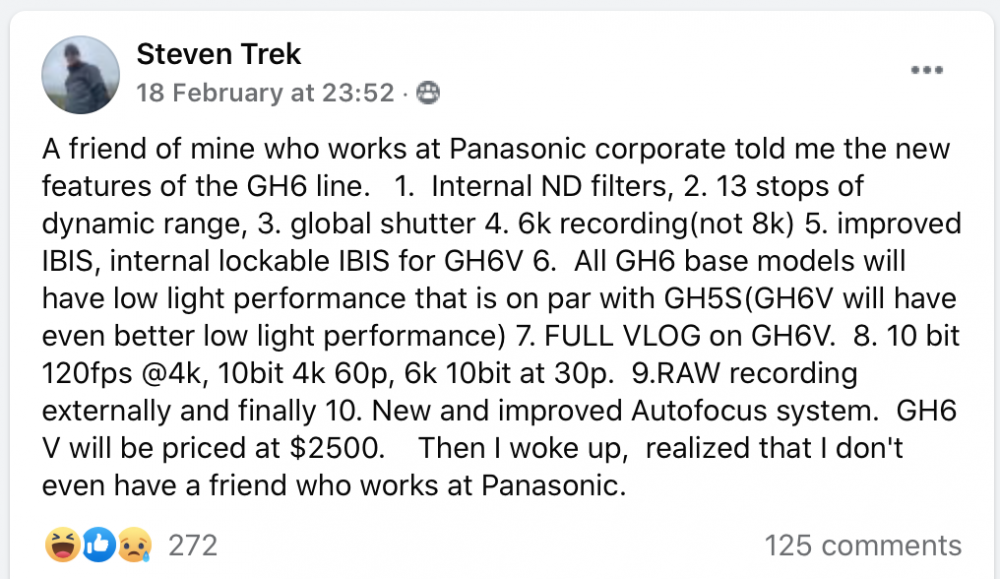Leaderboard
Popular Content
Showing content with the highest reputation on 02/21/2021 in all areas
-

Filters?
Mark Romero 2 and one other reacted to Mr. Freeze for a topic
I do use filters for certain projects. UV-Filters are on all of my lenses as a protection of the front element. I use NDs to keep the aperture low. I don´t really like to film wide open, but one step down still needs NDs, especially outside if I want to keep 180° shutter angle. I use the Tiffen Black Pro mist 1/4 and the Cinebloom 10% for diffusion. With some of my vintage lenses I don´t really need them, as they already give a softer look to the image, but it can be used as a effect. I mostly use them with the Sigma 18-35 and 50-100, because they are sharper. I started to use them for photos aswell. You can form the light leaking across your subject in very organic ways. I have a polarizer for my photography aswell, that I sometimes use outside for landscape or when water/rain is included. Overall, with ND and Diffusion you can counter the "video look" to a certain degree. But only if framing and what you´re filming supports this. But they can definitely help.2 points -
Blackmagic Camera Update Feb 17
EphraimP reacted to Mark Romero 2 for a topic
Thanks so much for the reply (and thanks everyone for letting me go off topic). Yeah, definitely redundancy. Thanks again.1 point -

Blackmagic Camera Update Feb 17
Mark Romero 2 reacted to EphraimP for a topic
Belt and suspenders baby, belt and suspenders. I definitely use lavs. Whenever possible I use a shotgun as well. If we're not too far from vehicles and doing a formal interview, I have boom a shotgun over talent from a c-stand or light stand. I've drafted people who are part of the group I'm interviewing but not being interviewed at the moment to hold the boom, under the camera's site line. It's almost guaranteed that they'll move the boom up into the frame of the wide angel at some point, but I typically shoot in 4K for a 1080 timeline. I've even held the boom myself once or twice, while running cameras and directing the interview; that's a pain in the ass. If we're doing a moving interview or I'm filming people in their natural habitat, as it were, I'll run a lav on talent and an on camera shotgun. In these situations the lav is usually the best sound, but it never hurts to have multiple tracks to choose from. The biggest problem I have with booms in the field isn't usually how to get it over/under talent, it's wind noise or other atmospheric noise like highway traffic or river noise. This winter I finally got a Rycote blimp. It's supposedly for Rhode mics, but of course it fits my Deity S2 perfectly.1 point -

Filters?
Mr. Freeze reacted to kye for a topic
Not quite, for many reasons which we've gone through already. This thread has more info than you ever wanted to know about emulating a Tiffen BPM filter in post.1 point -
Filters?
kye reacted to UncleBobsPhotography for a topic
This product is cheaper than UV filters, improves image quality instead of degrading it, and protects your lens: Magic Lens Protector and Image Quality Improver I've got a variety of filters, but don't use them all that often. The one I have used the most is variable ND filter just because of how convenience. Just got the Canon drop-in-variable ND-filter for the RF adapter, but since the sun has hardly come above the horizon I haven't gotten to use it much. The small amount I used it, it annoyed me a bit how easy it was to make adjustments by mistake. I wish it had a locking function or more resistance.1 point -
Flip-Out Screen Cameras On A Gimbal???
Mark Romero 2 reacted to UncleBobsPhotography for a topic
I guess this could happen in theory, but I've never had any problems with it. I don't think the force will not be large enough to do any meaningful damage to your camera, at worst a small scratch in the LCD, probably not even that. The shot will be ruined, but triple tapping the trigger by mistake will ruin the shot regardless of whether the camera crash into the handle or not.1 point -
Yeah, they're kind of gimmicky, and I guess Oly wouldn't want the pixel peepers buying them thinking they're "real" lenses and then trashing them online. Expectation management I guess. Canon did the same thing with the XC10 - when it launched it was on their website in the cinema camera section but very quickly it moved to some other random section. That makes sense, both the 15 being more common and also the simpler construction making it cheaper. It's a 30mm equivalent FOV, so much closer to the focal lengths that are easier to design and build, like a nifty fifty etc. Wider lenses seem to be far less common, and if you go deep into C-Mounts and coverage the difficulty was always at the wide end. Lots of cine zooms by the big names that were 50-250+ or other ridiculous lengths, and just leave me wondering why they didn't go for a more 24-70 type range that covers the middle ground, but wider lenses are more difficult and expensive to make and correct all the issues etc. Why only those lenses? Are you just thinking that lenses longer than 25mm won't be well stabilised, or is it a weight issue? Maybe some of the newer Chinese lenses might be light enough from being cheaper plastic construction? Or maybe they protrude too much to balance?1 point
-
i have 5900x 2060 64gb of ram i have S1 playback on timeline is no problem. i can even color grade while play back in Realtime same with my Mavic 2 drone footage which my old pc had a tough time playing on timeline. Never tried stacking footage but I'm sure it can handle it1 point
-
Flip-Out Screen Cameras On A Gimbal???
Mark Romero 2 reacted to gt3rs for a topic
On Ronin S you can disable selfie mode etc... I did it to avoid these mistakes not sure if it can be done on weebill s...1 point -
I've already made the purchase. Surely it makes no difference to my situation. I'm not buying to fix an error, I'm buying because the Pocket 6K Pro has features I need. I was planning to buy a Pocket 6K to compliment my Pocket 4K for my work. I didn't do so to eliminate a serious problem. I merely speculate that doing so will potentially resolve the occasional annoying issues I have with the adaptors. I appreciate the lecture on the use of non IS Lenses. I'm not buying expensive primes. I'm buying standard EF-S lenses on Pockets for event filming, corporate Promos, the odd music video and some personal travel videos. In such cases, the odd handheld use is needed and IS on 1 of my lenses is there to help such work when needed. Mostly for my own personal travel videos as my actual work tends to rely on a Monopod and the odd use of a gimbal. I'm not looking at a C70 purchase just yet. Aside from the cost, the lack of any RAWlite bothers me after enjoying BRAW on my Pockets. There is the extra cost of an adaptor for my EF lenses and frankly I prefer Blackmagic colour science to Canon. Always have done. I've spent several years wishing to own a Blackmagic when all my camera gear was Panasonic and only when the right camera at the right price came along, I seized it and have never looked back. For AF alone I may consider it in the future or something else Canon if the price is right and the specs suits my needs. Or maybe Panasonic will fix their AF and release their own version of a C70; that is for the future; but right now, the Pocket 6K Pro meets my needs and I am excited to receive it and work with a S35 sensor again after so long.1 point
-
Blackmagic Camera Update Feb 17
kye reacted to newfoundmass for a topic
This talk of a great image makes me nostalgic for the OG Pocket Cinema Camera. Nothing I've owned since has come close to it. I don't miss having to rig it up though!1 point -
There are lots of interview situations that don't call for a chair, or where one isn't even possible. I, for instance, shoot mainly doc-style pieces for environmental nonprofits as a solo shooter, which means 70-85 percent of my works happens outdoors, in the field. Thus, standing interviews are a must almost all the time for me. And even if you tell someone to stand on a mark and not move their body too much, most of them are going to move in some way or another as you get deep into the interview, especially if you get them comfortable with the camera and really into what they are talking about. And if possible, I'm running two cameras in these interviews, so I can cut between different angles to add interest to the piece and hide cuts that would be obvious I only had one camera angle. If you are trying to get non-pro subjects to say scripted lines, I find you're going to get a pretty wooden delivery most of the time, no matter if your subject is sitting or standing. As a former journalist, in my experience I get much better results if I do a traditional interview and get my subjects really talking about the topic at hand, even if I have some very clear bullet points of information I need them to say. I find getting people comfortable enough with the camera that they forget in the moment that it's rolling is key to getting an good clip. People getting animated and moving around a bit and talking with their hands gives me the most impactful interview material. Basically, if I can film interviews that feel like the subject is just talking to someone (off camera) with all the normal ticks and motions and conversational gestures people expect in a real conversation, the end result is many times better than having someone say scripted lines to the camera. And there are lots of times in doc work where you want to see your subject moving around while talking. It doesn't have to be an interview necessarily; you might want your subject inspecting a logging site or in a burnt-out forest and talking about what they see, or walking along a river that's the subject of your piece telling a story that is relevant to your video. Or maybe you want your subject talking while driving or riding in a car to an important destination, or through a critical scene. Or you might be recording a protest or town hall meeting or some other live event where you can't direct who is speaking or how they are moving. In all of these situations, having really good AF-C, especially with face tracking, can be extremely helpful for a single shooter or a small crew without a dedicated focus-puller. And none of them has anything to do with what a pack of self-referential YouTubers recommend or another dreadful blog about someone making coffee or riding a One Wheel around Toronto or LA. They are real-world situations that professional shooters encounter every day. If they are not situations you shoot in, great. But it would be silly to discount them. Is perfect autofocus a must? No. I do a lot of manual focus in these situations. But solid autofocus is a valuable tool that shooters like me want access to. It definite factors into my camera buying decisions. It's not the only factor I consider, but I'd probably rate it higher than a lot of other features such as RAW shooting or open gate/true anamorphic modes. It just comes down to what each individual shooter prioritizes in their work. In the end, none of the cameras out today are perfect, but it's awesome that we have so many choices and so many key features and jumps in quality are filtering down to sub-$10K and even sub-$5K cameras.1 point
-
Blackmagic Camera Update Feb 17
IronFilm reacted to independent for a topic
Autofocus is not necessary for many reasons. It's also necessary for many reasons.1 point -
A quick thought, will they make a 4K MFT version?1 point


